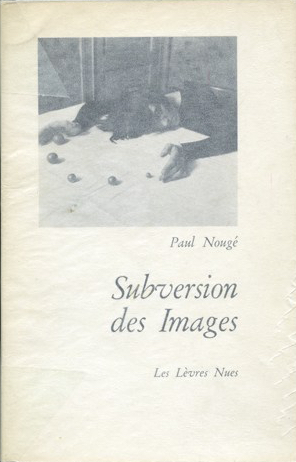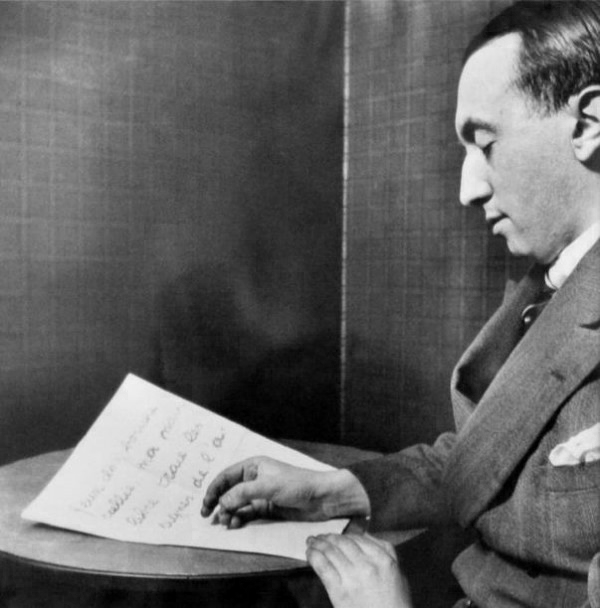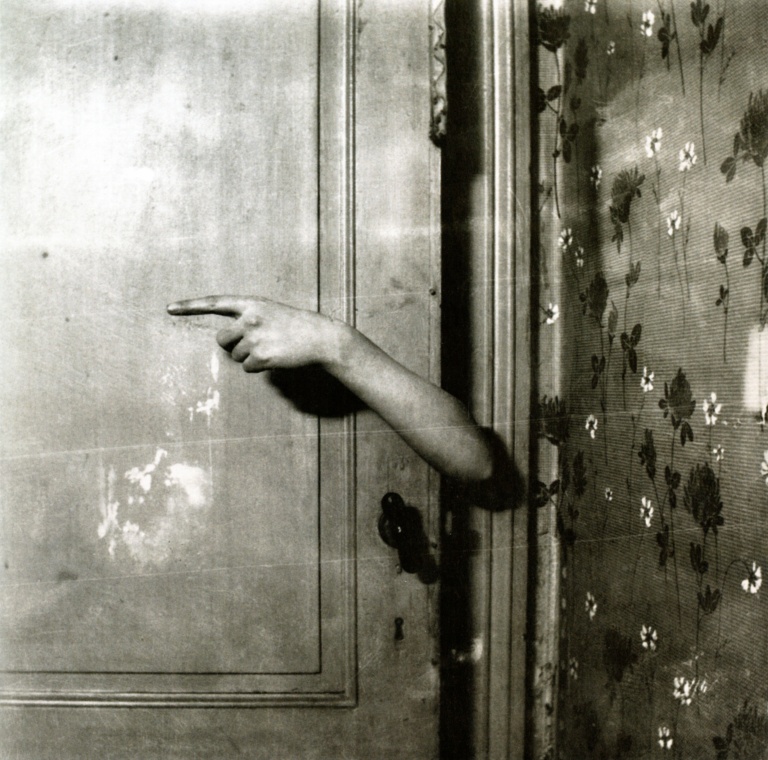 November 6: 1967, Paul Nougé (*1895) died. He was not a photographer.
November 6: 1967, Paul Nougé (*1895) died. He was not a photographer.
Though he was not a photographer, but a writer, a poet, and an intellectual, he is known for nineteen photographs reproduced in a small book, all made over the course of three months, from December 1929 to February 1930, with a simple amateur camera.
The work appeared in Surrealist journals, but was published as a book only much later, after his death in 1968. Only 230 copies were made.
In November 1924, Nougé’s Correspondance, actually an early manifestation of ‘mail art’ “seized the attention of the Paris Surrealists and from then on Surrealism in Belgium was dominated by Nougé”, just as he had helped found the Belgian Communist Party in 1919.

The purpose of Correspondance was to distinguish Belgian from French Surrealism which the publication targeted in an effort to resist incorporation into the hegemonic, Paris-based international movement. Paul Nougé wrote;
So that man may go where he has never been, experience what he has never experienced before, think what he has never thought before, be what he has never been. One must help him in this; one must provoke this transport and this crisis, so let us create disturbing objects.
 The title of the book is ambiguous; Subversion des Images, in French as in English, may mean either that images are subverted, or may themselves subvert. In his own words;
The title of the book is ambiguous; Subversion des Images, in French as in English, may mean either that images are subverted, or may themselves subvert. In his own words;
…it is a question of giving beings, objects, a function, a use different from the usual one.
In the photographs irrational or missing objects are indicated in a destabilisation or denial of the indexical nature of photographs that we take for granted, especially in snapshots. All are taken in an ordinary domestic interior of the kind the Belgian surrealists themselves lived in, dressing as petit bourgeois; the domain of the snapshot that his actors inhabit as if in the dreamlike, mesmerised state.
Here he writes about the Snapshot (‘L’instantané‘) in an undated, posthumously published poem:
The fine straight blade
too sharp
ah! truly plunges plunges
into the too solid white flesh.
Cold fecundity of the fine blade
beautiful flesh of certainties here is the fine blade
a little blood ebbs on the lips
the needle tears itself away from the dial
dives toward the North
a hand dances alone
the eye explodes from too many images.
Midday – Midnight
collapses into a vertical sea.
As his friend Marcel Mariën explains;
….he paid particular attention to the faculty of words to say something for themselves, something more than the thought that makes them work, this something is always more or less ambiguous, due to the natural condition of language.
For Nougé the subversive principle remained the same whether applied to photography, as in Subversion des images, or to language.



However it is a presumption to treat these few photographs taken over a couple of months, the entire photographic output of Nougé, purely as pictures. Nougé’s photographs ask what, precisely, is surrealism’s object, and why was the surrealist movement so fascinated by objects? They operate, as did Correspondance, as a manifesto, as a challenge.
The work of René Magritte (who appears second from right in Paul Nougé’s, The birth of the object, above), serves as parallel which may illuminate this contradiction. Like Nougé, Magritte approaches his medium methodically; his paintings are plainly made, like those of a sign-writer. Both had a same taste for bizarre titles that the photographer often invented for his friend the painter, given after Magritte’s paintings were made. With minimal painterly nuance or expression, they are the painted counterpart of the snapshot.
What Nougé subverts is documentation, the ‘representative real’, exposing it as all indexing, with no “thing itself.” The captions in the book read as instructions, though it is impossible to tell if they were written before the photographs were taken, during their making, or after, His intent is undertake a methodical investigation in which we are given to understand that the participants in his photographic have been instructed to:
[choose] an action performed through an object or on an object and modifying this object while perfectly maintaining the gesture or attitude of the chosen action

A comparison of one of his images with that of Magritte’s makes it clear that his strategy sidesteps any category of image-making, in a manner close to Fluxus’ intermedia, and like them, to centre on action and process.
Publisher Mariën suggested in 1968 that Subversion of images led to Nougé’s theory of René Magritte’s paintings in his Les images défendues (1943).
On the back cover of the book, a coda, the index finger of a disembodied arm, turns us back on our path, to begin again…







I love the playfulness of these pictures, perhaps my favourite of all Surrealist photographs. Thanks for another great post.
LikeLike
Thank you for your observation…Nougé’s collaboration in making them no doubt lent itself to the group inventing the ideas together. Though there’s no record of such a process, perhaps that is what contributes to what you see in these pictures.
LikeLike
Great stuff thanks as always. Do you own a copy of the book?
LikeLike
Thank you for your kind comments on the blog. The book…if only…$US600 minimum for one of the 230 special limited 1968 edition, no facsimile published since that I can find, though there are a few of the unlimited edition, also printed 1968, still floating about.
LikeLike